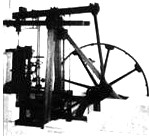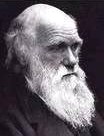阅读理解.
Thirty years ago, Lake Ponkapog in Hartwell, New Jersey, was full of life. Many birds and animals
lived beside the water. which was full of fish. Now there are few birds, animals, and fish. The lake water
is polluted (污染的). It is in a colour of dirty brown, and it is filled with strange plants.
How does this happen? First we must think about how water gets into Lake Ponkapog. When it
rains water comes into the lake from all around. In the past there were forests all around Lake Ponkapog
so the rain water was clean.
Now there are many homes around the lake. People often use chemicals (化学品) in their gardens.
They use other chemicals inside their houses for cleaning or killing insects (昆虫). There are also many
businesses. Businesses use chemicals in their machines or shops. Other chemicals fall onto the ground
from cars or trucks. When it rains, the rain water picks up all the chemicals from homes and businesses
and then carries them into the lake. They pollute the water and kill the animals.
Boats on the lake are also a problem. Lake Ponkapog is a popular place for motorboats. But oil and
gas (油和汽) from boats often get into the lake. So more bad chemicals go into the water this way.
People in Hartwell are worried. They love their lake and want to save it. Will it possible? A clean lake
must have clean rainwater going into it. Clean rainwater is possible only if people are more careful about
chemicals at home and at work. They must also be more careful about gas and oil and other chemicals
on the ground. And they mustn't use motorboats any more on the lake. All these may change people's
lives. Only then can Lake Ponkapog be a beautiful, clean lake again.
1. In the past, the water in Lake Ponkapog was made clean by _____.
A. forests
B. rain
C. birds
D. fish
2. Chemicals from homes and businesses _____.
A. are always clean
B. can help the animals
C. are good for the lake
D. get into the rainwater
3. Cleaner rainwater will mean _____.
A. more boats on the lake
B. more dirty things in the lake
C. a cleaner lake
D. a dirtier lake
4. To save Lake Ponkapog, people need to _____.
A. be more careful about chemicals
B. use less water
C. grow fewer plants in the gardens
D. use more motorboats on the lake
5. The passage is about _____.
A. boats on Lake Ponkapog
B. why the water is dirty in Lake Ponkapog
C. clean rainwater
D. dirty lakes



